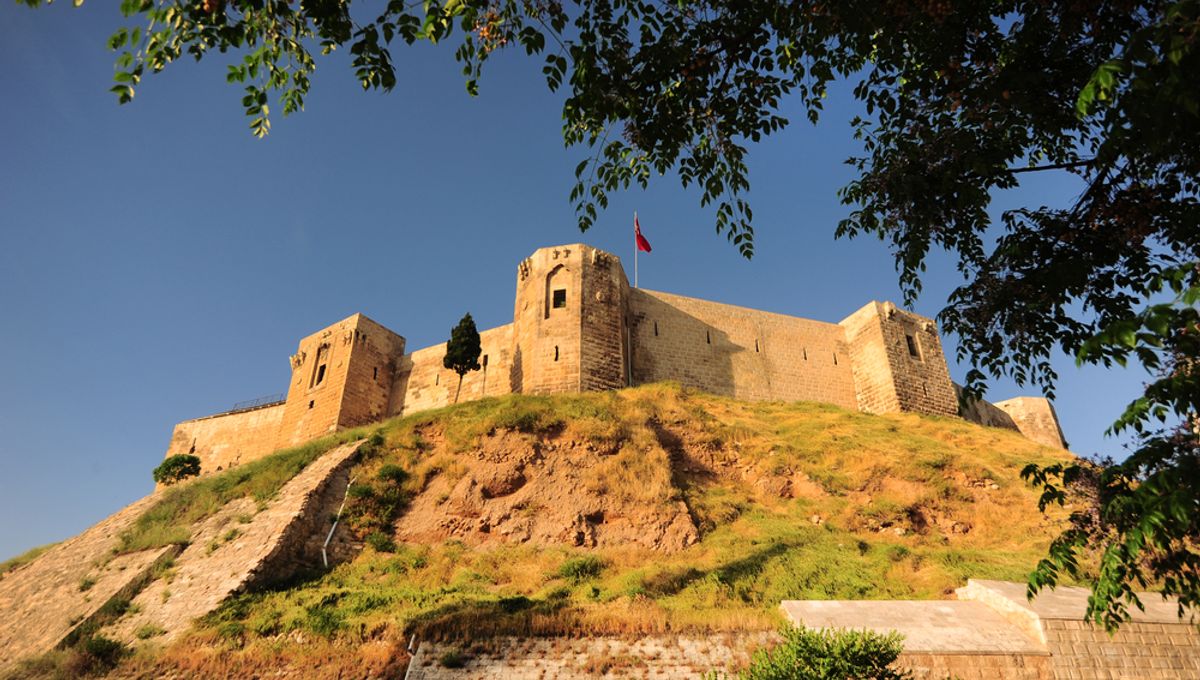
The devastating earthquake that struck Turkey and Syria on Monday has caused catastrophic damage to Gaziantep Castle, a historic Roman-era castle in Turkey’s Southeastern Anatolia Region.
Photographs and footage from the scene show large parts of its ancient stone walls have fallen down the surrounding hillside. Some bastions in the east, south, and south-east parts of the castle have also been destroyed by the tremors, according to Turkish state-run news agency Anadolu.
Along with damage to Gaziantep Castle, the dome and eastern wall of the 17th-century Şirvani Mosque, which is located next to the castle, also partially collapsed.
Gaziantep Castle was considered one of the best-preserved citadels in Turkey. It was built in the 2nd and 3rd centuries CE when the Roman Empire ruled over Anatolia, present-day Turkey.
Found on a hill in the heart of the city of Gaziantep, the castle had an irregular circular shape with a diameter of about 100 meters (328 feet), featuring 12 towers and 36 bastions.
The structure was expanded and renovated under Byzantine emperor Justinian I in the 6th century CE. It also underwent some further building works in 1557 under the rule of Suleiman the Magnificent during the Ottoman Empire.
The 7.8 magnitude earthquake hit the Eastern Mediterranean at 4:17 am local time, followed 11 minutes later by a 6.7 aftershock, on Monday February 6. A second earthquake measuring 7.6 in magnitude hit less than 12 hours later.
While the scale of the destruction is still being tallied, it’s clear Turkey and Syria have been severely damaged by the earthquake. As of February 7, the official death toll has reportedly surpassed 5,000, but that figure is expected to rise over the coming days and weeks.
The area is known to be geologically active as it’s found at the crossroads between the Anatolian, Arabian, and African tectonic plates.
“Earthquakes occur when locked portions of faults suddenly ‘break’, resulting in rocks moving rapidly during catastrophic failure events. Aftershocks are usually lower magnitude earthquakes that happen as the crust settles and recovers in the new position,” commented Dr Catherine Mottram, Senior Lecturer in Structural Geology and Tectonics at the University of Portsmouth.
“There is the potential that the 7.5 magnitude shock was related to a second period of movement along a different depth or along strike location on the fault, or on a different fault strand. Geophysicists will be able to reconstruct exactly where movement occurred along the fault by reconstructing data collected by seismometers in the region, so more information should come out in the coming days and weeks about exactly what happened,” she added.
Source Link: Turkey's 1,800-Year-Old Gaziantep Castle Wrecked By Devastating Earthquake